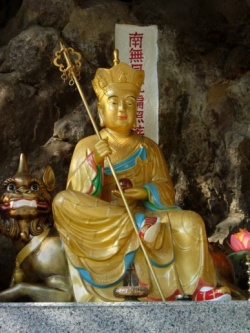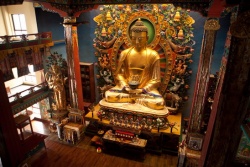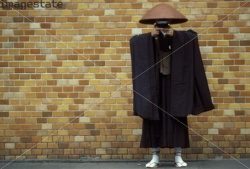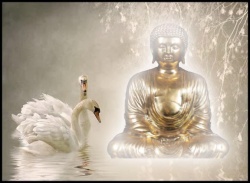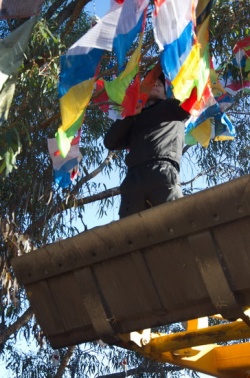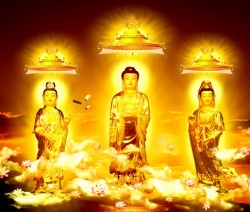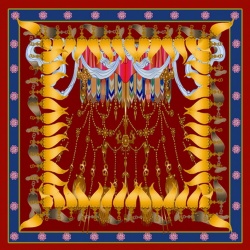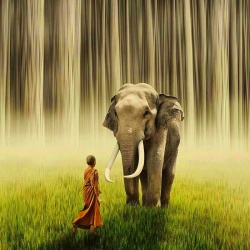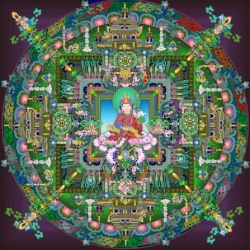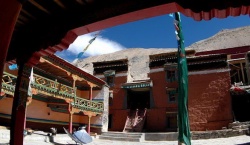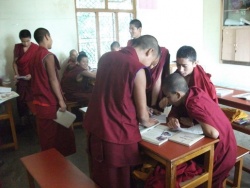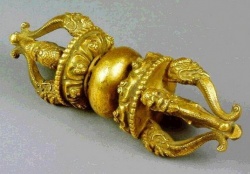Heruka Five Deities Initiation
Kyabje Zopa Rinpoche has kindly offered to give the Highest Yoga Tantra Great Initiation of Heruka Five Deities during this week.
The Lama
Kyabje Zopa Rinpoche is an acknowledged master practitioner in the mother tantras, his style utterly unique, his explanations of bodhicitta and emptiness unexcelled, and his warmth and compassion unbelievably vast.
This is an extraordinary and rare opportunity to connect with a supreme master practitioner and with a superlative subtle system of meditation.
Buddhist Tantra
This is a very rare opportunity to enter into the practice world of Buddhist Tantra, especially the Highest Yoga Tantra systems of Buddhist Tantra and to make an enlightening connection with an acknowledged master.
The tantric systems utilise subtle and very subtle energies also known of and identified in some of the yoga systems.
The subtle body is about chakras (energetic centres), nadi (energetic pathways) and bindu (energetic drops).
Attending and following through a Great Initiation acts to purify our own subtle body and starts to make it workable for becoming a Fully Enlightened Buddha for the benefit of all.
What is Heruka
The practice of the Buddha Heruka Cakrasamvara is one of the three main Buddhist Tantra practices in the Gelug tradition. The name Chakrasamvara can be translated to mean "Wheel of Supreme Bliss".
This profound practice is a powerful method for attaining the blissful realization of the empty nature of all phenomena.
The practice of Heruka is said to be especially beneficial in degenerate times and can lead the practitioner to the supreme realisation of bliss and emptiness.
Who can participate
Students wishing to take this initiation should be familiar with the lam-rim, the graduated path to Enlightenment. They must also be prepared to commit to the practice path of Buddhist tantra. Attendance at all initiation sessions is necessary. Once the initiation has started there will be no further admission.
Please also respect Kyabje Zopa Rinpoche’s well known stance on Shugden.
Kyabje Zopa Rinpoche requests those wishing to enter a teacher-student relationship with him not engage in the practice of Shugden.
Vows and Commitments
Students will take the Bodhisattva and Tantric vows (see below) as part of the initiation. Commitments refer specifically to the relationship we have with the vajra master (the lama giving the initiation) and how we must avoid doing anything that breaks that special bond.
Initiations often include mantra-recitation or daily practice commitments; they vary depending on the vajra master.
The following vows and commitments are a general indication of what Kyabje Zopa Rinpoche usually requests when conferring the Highest Yoga Tantra initiation of Heruka Chakrasamvara 5 Deities.
Whenever a highest yoga tantra initiation is given, it is done so within the context of the disciple receiving three sets of vows within their mind-stream: refuge, bodhisattva, and tantric vows.
In addition to this, the student pledges to uphold a minimum practice requirement for having received empowerment, the most common of which is to do the “Six-Session Guru Yoga” practice three times each morning and three times each evening for the rest of this lifetime.
One may do the full version, an abbreviated version, or some combination of the two.
It is possible that Rinpoche will also request that students do the short practice of Heruka 5 Deities for the rest of this lifetime. (This initiation is always the prerequisite for the Heruka Body Mandala initiation.
If at a later time one takes the Heruka Body Mandala initiation, one doesn’t need to do the Heruka 5 deity practice daily. It is sufficient to do the Yoga of 3 Purifications.)
It is taught that there is no way to attain complete enlightenment without practicing Buddhist tantra on the basis of keeping these vows and commitments purely with the preliminary realizations of renunciation, bodhicitta, and emptiness.
Because these vows are so difficult to keep purely, especially in these degenerate times, there are practices that can be used to restore and purify broken or degenerated vows.
What are Bodhisattva vows?
Anyone who has ever met Kyabje Zopa Rinpoche will know that he embodies every quality of love and compassion.
His joyful laughter, kindness and generosity are legendary; it is quite obvious that everything he does is for others. His own life is a powerful display of bodhicitta in action.
The bodhisattva vows are eighteen root and forty-six secondary vows and relate to training the mind in the six perfections (generosity, ethics, patience, joyful effort, concentration and wisdom).
They are vows we take to not commit various “downfalls” such as praising ourselves, not sharing the Dharma with others, holding perverted views and so forth. Asanga’s Bodhisattva’s Grounds says that we should be highly familiar with the vows before we receive them.
Kyabje Zopa Rinpoche:
“Millions of people suffer from depression, but if you dedicate your life in the morning to numberless sentient beings, you will have unbelievable joy and happiness the whole day.
Cherishing the I opens the door to all suffering while cherishing others opens the door to all happiness.
When you live your life every day for others, the door to depression, relationship problems and all such things is closed and instead there is incredible joy and excitement.
My general advice is to try as much as you can to live your life with a bodhicitta motivation whatever it is you are doing, whether you are working, studying Dharma, doing meditation or praying. Then you become a most unbelievable fortunate person.
The minute we take the vows (until death for Pratimoksha vows, and until enlightenment for bodhisattva and tantric vows), day and night we collect merit all the time by living according to those vows. It is a cause to receive a good rebirth in your next life.
If it is performed with renunciation, it becomes a cause to achieve liberation from samsara. If it is performed with bodhicitta, it becomes a cause for enlightenment.
Then, day and night become a cause for enlightenment and to enlighten sentient beings. In the Mahayana practice, the goal is not just to achieve enlightenment yourself, but to lead all beings to enlightenment. Your goal is clear.”
See this link to read a commentary on the Bodhisattva Vows by Khenrinpoche Lama Lhundrup.
What are Tantric vows?
The tantric vows, due to their very subtle nature and the chance of them being misinterpreted if read purely out of curiosity, must be received before we can research them.
What is the Six Session Guru Yoga and how long does it take?
One may do the full version, an abbreviated version, or some combination of the two.
How long this will take is subjective. Especially in the beginning, until one is familiar with the practice, the time taken will be longer than when it has become part of your daily life. The absolute minimum time needed is 5-10 minutes twice per day.
Lama Zopa Rinpoche:
“Pabongkha Dechen Nyingpo said the Six-Session Guru Yoga is more precious than three galaxies filled with gold. It is much more precious and extremely difficult to find.
Why? Because the practice of Six-Session Guru Yoga has unbelievable benefits; it gives incredible protection.
Doing this practice eliminates so much heavy negative karma and purifies all ten non-virtuous actions, broken pratimoksha vows, bodhisattva vows, and tantric vows.
It also allows us to practice the general tantric vows, the samayas of the five buddha families, and the tantric root vows.
Without practicing these vows, there is no basis for tantric realization and no way to achieve enlightenment.
This practice creates the cause for a perfect human rebirth and to meet the teachings. Six-Session Guru Yoga creates the cause for one to quickly achieve enlightenment.”
What is the short practice of Heruka 5 Deities and how long does it take?
The principal technique used in Buddhist tantra (Vajrayana) is visualizing a deity, either in front of us in front-generation, or visualizing ourselves as the deity in self-generation.
With this method we are able to practice the four complete purities and conjoin method and wisdom within the subtlest mind. This is called deity yoga.
How long it will take to do the daily practice of Heruka 5 deities is subjective. Especially in the beginning, until one is familiar with the practice, the time taken will be longer than when it has become part of your daily life.
The absolute minimum time needed is 15 minutes per day. In deity yoga we see ourselves as the deity and our environment, resources and activities as pure.
. Lama Yeshe explains:
“The way we explain a yoga method is as follows. First we explain the qualifications that students need in order to receive the method and those that teachers need in order to give the initiation.
Then we explain how students can keep their body, speech and mind pure and going in the one direction.
Then we give the initiation and commentary and explain how to do retreat and what kind of realizations students can expect and how to gain them.
When we practice the yoga method, first we do the transcendent process of transformation, doing the absorption and then arising as the deity.
Then we contemplate on the divine body of the deity and gradually reach the point of mantra recitation, where there are many different concentration techniques we can apply.”
“In order to realize the dharmakaya we have to make a connection between it and our own fundamental experience. We have to create a link. It’s like shooting a gun – you have to have a target.
When we meditate, we have to focus our energy on the dharmakaya, so there needs to be some kind of logical relationship between what we are practicing and the goal, the dharmakaya.
Therefore, we first transform our consciousness into the rainbow body and then transform our consciousness into sound.
Then that too disappears into non-duality. By contemplating on that kind of deep experience – our wisdom contemplating on only the tiny, subtle object of sound and that subtle object of sound also disappearing – our wisdom is left embracing empty space.
That helps us eliminate our dualistic mind and brings us closer and closer to the dharmakaya.”
“Beginners always have trouble holding the object when they first try to develop concentration and often get upset when it disappears: “I’m a terrible meditator; my concentration is so bad.” Don’t be discouraged. W
hen the object disappears, you’re left with a kind of non-duality. Take advantage of that. Take that opportunity to bring yourself closer to the dharmakaya experience.
However, I’m not talking about your losing the object through sluggishness, through falling asleep. That’s no good at all. It’s when you’re trying to practice mindfulness but just can’t keep the object in mind.
At that time, when the object – the sound, the deity, whatever it is – disappears, that’s OK. Just stay in the space of non-duality.
In the meditation session, then, we try to experience the unity of insubstantiality, non-self-existence, and the blissful, radiant, rainbow body and single-pointedly contemplate on that.
But then you might ask, “It’s all very well doing this in retreat but what happens when I get back home and have to go to work? How can I meditate on non-self-existence in the real world?”
The answer is that if you can have an experience of non-duality during formal meditation, when you are out and about during the breaks, working or doing whatever else you do, when you look at the objects of the sense world you can simultaneously perceive their non-duality.
Then the normal concrete vision that once made you feel small and insignificant no longer dominates your life.
The main point of contemplation, of visualizing this evolution into the deity, is to stop your ego and superstition from functioning, so all such mental speculation is uptight energy that only makes you more uptight.
It is much better to be a bit loose, relaxed. When your mind arrives at the object of contemplation, just leave it alone; let it go. Don’t worry; just contemplate.”
